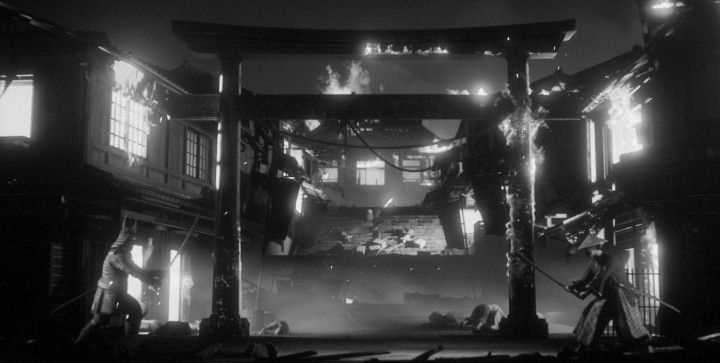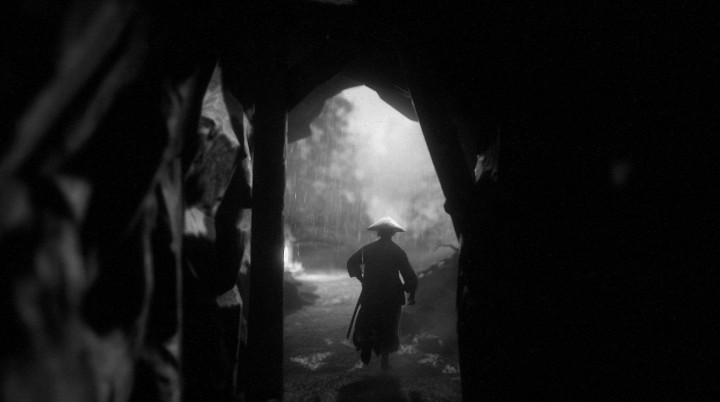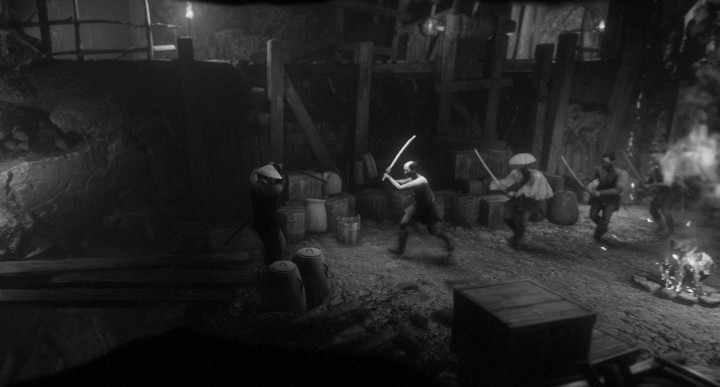
When I saw the E3 2021 trailer for Trek to Yomi, a samurai game from developer Flying Wild Hog (who also made Shadow Warrior 3), I was stunned. One of the first things that came to mind was that it felt like Ghost of Tsushima, but in 2.5D. And although there are some obvious parallels between the two (especially if you played Ghost of Tsushima in Kurosawa mode), Trek to Yomi very much marches to the beat of its own drum. From its lush, striking monochrome color scheme to its simple-yet-engaging and visceral combat, Trek to Yomi pretty much nails its execution on all fronts.
Trek to Yomi does a solid job of starting the player off with the tools they will use throughout the story campaign — tools that never get tired or feel old hat — while also drip-feeding new additions to your arsenal and new combos. This formula keeps things fresh for the long haul without diminishing the effectiveness of the basic building blocks. Everything, for the most part, feels balanced and just challenging enough on the game’s normal setting.
I covered the opening chunk of the story in my hands-on preview, but just to recap, you play as Hiroki, an apprentice swordsman learning under the tutelage of your master, Sanjuro. Hiroki has an affinity toward Sanjuro’s daughter, Aiko. Their village suddenly comes under attack by bandits, and Sanjuro springs into action, instructing Hiroki to stay behind.

But what kind of a game would this be if the protagonist didn’t barrel headfirst and cocksure into trouble, disobeying his master? Sure enough, things go south fast, but the village is for the most part saved from total ruin.
The game then jumps forward in time a bit, and we next see Hiroki as a young man, sworn to protect Aiko, who has since become the love of his life and who is now also the de facto leader of the village. Again, bandits get up to some bandit stuff and Hiroki is lured to engage, but in the process of trying to be a hero, he leaves the village (and Aiko) vulnerable to invasion.
This ultimately culminates in the titular Trek to Yomi. But there’s a little something I didn’t know going into this (as I am almost completely ignorant to this element of Japanese culture): Yomi is basically the underworld. So, as you can imagine, the trek isn’t quite voluntary, and you definitely won’t be stopping to smell any roses.

Without spoiling more than the title alone does, you’ll eventually find yourself in Yomi, trying to undo the wrongs that were set into motion from your brash attempts to vindicate the other wrongs set into motion at the beginning of the game. In short, there are a lot of wrongs at play here. It’s all quite cyclical for poor Hiroki, and once he thinks he has found a solution, he — and, by extension, the player — is met with a pretty heady decision between three paths forward.
I wasn’t expecting this element of the game, but the choice weighed heavy on me, as I was suddenly asked to decide between what the character might have preferred, versus what I personally felt was the right move. And then there was a third option that seemed reasonable — or perhaps more noble in the moment.
I sat for a minute and thought hard on what choice felt the most appropriate, without any indication of how this might affect the rest of the game. I didn’t play through all three options, so I found myself wondering how the other two might have played out as the next jaunt in my journey led me to my ultimate destination.

Trek to Yomi ended up surprising me and exceeding my expectations. I was initially a little concerned that I had seen most of what the game had to offer during my preview, but thankfully that was not the case at all.
I started this review comparing Trek to Yomi to Ghost of Tsushima, but the more I played Trek, the more I realized the divergence between approaches to gameplay and storytelling of these two samurai games. Trek to Yomi is very much a linear — at times, side-scrolling — adventure without all of the bloat that is unfortunately intrinsic to most open-world games these days. Because of this approach, it is afforded a tighter, more focused experience that splits its allegiance almost right down the middle between narrative and gameplay.
The combat is fairly straightforward, but it’s still incredibly satisfying when you manage to dispatch a number of bandits or demons with flashy and well-animated sword slashes, or one of a number of projectile options. You have a basic light and heavy two-button attack scheme, with some throwable projectiles to help with crowd management or to stun a distant enemy keen on hurling arrows at you from afar. There is almost a sense of each leg of the journey being a mini challenge all its own, as you fight between checkpoints, monitoring and trying to conserve as much of your health and resources as possible until you reach the next checkpoint and recharge your health and replenish your secondary weapons.
I think Flying Wild Hog also did a great job of littering collectibles and items in nooks and crannies, which unlock items that flesh out the world and lore, and also boost the number of hits you can sustain. Or, they might bolster your stamina meter, which dictates how much you can block or attack. These aren’t the deepest systems, but all of it works well within the game’s narrow scope — Trek to Yomi sticks to combat and light platforming with somewhat minor exploration off the beaten path.

Trek to Yomi also has incredible sound design; I can’t recall the last game I played that so effectively conveys the mayhem and horror of wholesale massacre like Trek does. It all comes together to paint a frantic story of devotion and the cost of redemption, as terrified villagers run and scream in the background and a woman cowers in the presence of a group of bandits that just murdered her husband and probably have similar — if not worse — designs for her.
It isn’t perfect, but Trek to Yomi delivers an engaging narrative while looking flat-out gorgeous. It very much exceeded my expectations, and I found myself absorbed in Hiroki’s tail of revenge and absolution. I would highly recommend this one, especially if you already have Game Pass. If you don’t have Game Pass, though, the game’s $20 price tag is worth it — Trek to Yomi is absolutely worth experiencing.
Trek to Yomi is a glass half full of Sapporo; it’s initially familiar and a bit underwhelming with the first sip, but after you really get in there you end up surprised by how complex the flavor can be.
Disclaimer: I was given a review code for Trek to Yomi on Steam, but the opinions expressed in this review are my own.